
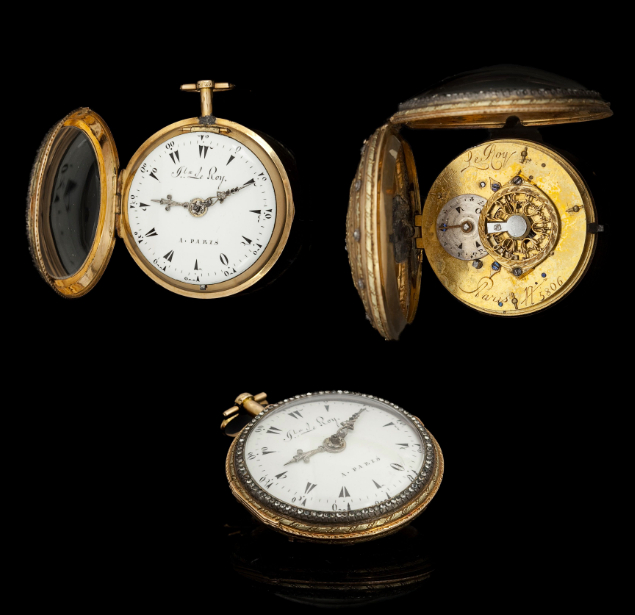
One of several reasons why the city of Wilmington, North Carolina, was settled at precisely its current location on the Cape Fear River, in the early 1730s, had to do with a few excellent freshwater springs that issued forth on this spot. The most famous of these was the Rock Spring, at the foot of Chesnutt Street. It played a big role in downtown Wilmington cultural life for a couple of centuries. The Daily Journal described it, just after the Civil War, as “one of the great old land marks of our city,” adding that its “reputation is as old as that of Wilmington itself.” Which was true: the spring’s existence is first attested to in a property deed of 1739.
People got their drinking water from the Rock Spring, and ships filled their casks from it. Local traditions developed that the waters had healing or otherwise mystical powers. At one point in the 1840s, a Second Great Awakening-style canvas revival-tent was erected close to the source and dubbed the Rock Spring Tent. The nearby Rock Spring Hotel was a fixture for more than 150 years. There was also a “Rock Spring privy”—a public toilet—and that plays into today’s update.

The old Rock Spring came into the news two years ago when members of Wilmington’s Public Archaeology Corps briefly uncovered the brick walls and old stone steps that once led down to its waters. The Corps had been digging in advance of construction on the new River Place complex. UNCW professor emeritus Chris Fonvielle, Jr. wrote an article about their excavations (both physical and archival) for Salt magazine. You can read that piece and see cool pictures here.
Going wisdom has it that the first mentions of the Rock Spring in old newspapers and public records date from the 1820s. A thing we make a habit of here at Third Person Project is trying to ask, whenever we hear the word “earliest”: Really? Are you sure there isn’t something earlier? In this case, there was. It’s intriguing, too.
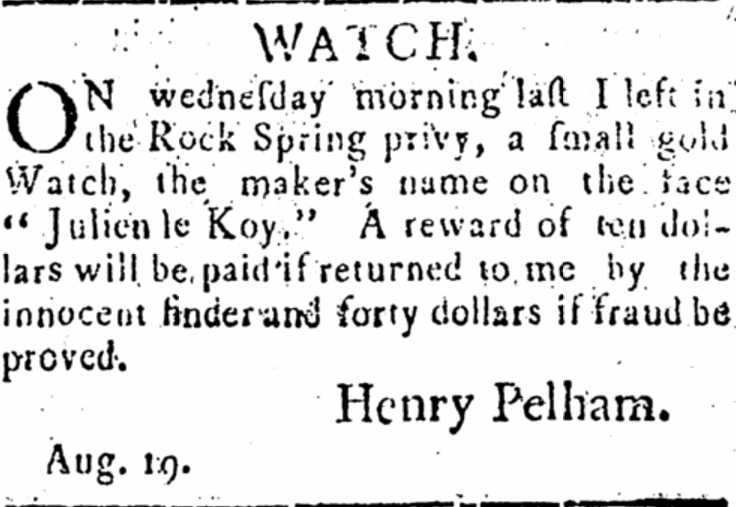
In August and September of 1806, an advertisement appeared in several concurrent issues of the Wilmington Gazette. A man named Henry Pelham had accidentally “left in the Rock Spring privy, a small gold Watch.” He seeks its return. It seems that he had been doing his business there in the stall, and removed his watch, then walked off without it. He even identifies the maker of the watch, his “name on the face,” as one Julien le Koy. The questions become: Who was Henry Pelham? And who was Julien le Koy?
In the case of Pelham, very little information could be found. He left so few traces that one suspects he did not live in Wilmington long. Evidence, however—in the form of two subsequent advertisements placed by Pelham in the Gazette—suggests that he was involved in the early theatrical world here, possibly an actor or impresario of some kind. The first of these ads is from later in the same year, December of 1806, and announces the performance of two plays: a comedy, “Lovers’ Vows,” and a farce (penned by the legendary English thespian David Garrick) titled “Neck or Nothing.” The text of the ad mentions the fledgling Thalian Association, which had just become established here the year before, in 1805—and continues to thrive until this day. The ad specifies that, “Tickets may be had … of H. Pelham”
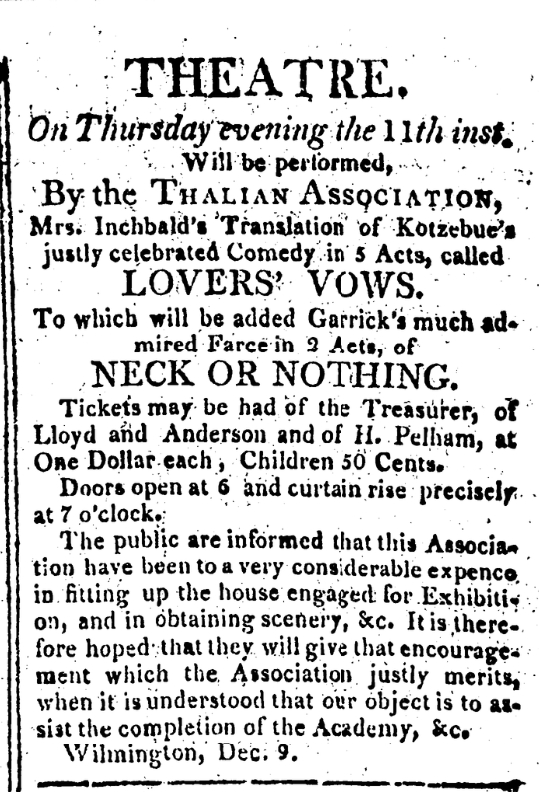
A month later, in January of 1807, Pelham is again looking for lost property. This time a patron at one of the performances—presumably the two shows advertised the month before—has lost “a small pocket pistol” and wants it returned. Pelham writes (on what evidence, if any, he leaves unstated) that, “it is supposed the same was taken by a black attendant on the last night of performance.” He offers a reward of five dollars for its return. And this is the last notice we could find of Henry Pelham. Please holler if you know more.
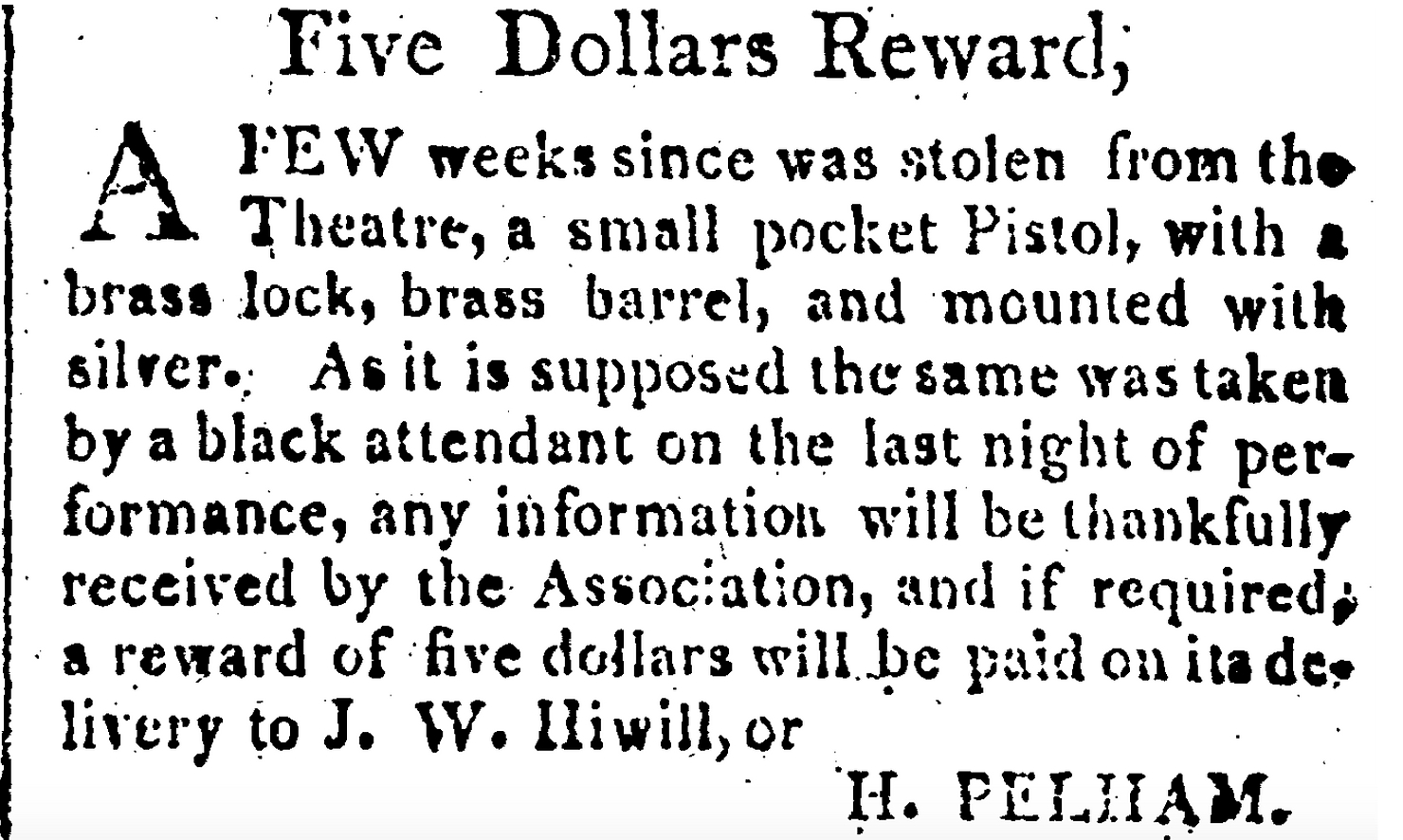
As for Julien le Koy, he is an easier nut to crack. The name is a misreading or misspelling of Julien le Roy, a major French clockmaker and watchmaker of the 18th century. Le Roy has a Wikipedia page, and pieces he made are on display at the Louvre and Met, so we won’t belabor the details of his life and career. Look him up if you’re interested. He had a son named Charles who became a doctor and contributed to Diderot’s famous Encyclopédie. A Le Roy watch was a work of art. It’s no wonder Pelham wanted it back, and a shame he left it at the privy. As far as we know, the Wilmington Public Archaeology Corps did not turn up any 18th-century gold watches at the riverfront site. Maybe it was returned to him. The rewards he offered were large.
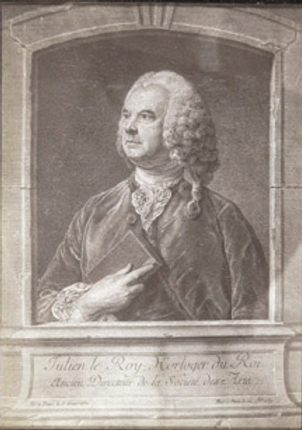
Every hole becomes a rabbit hole when you’re doing this kind of work. We hope you’ll keep following us down. (And following us, in social-media terms.)